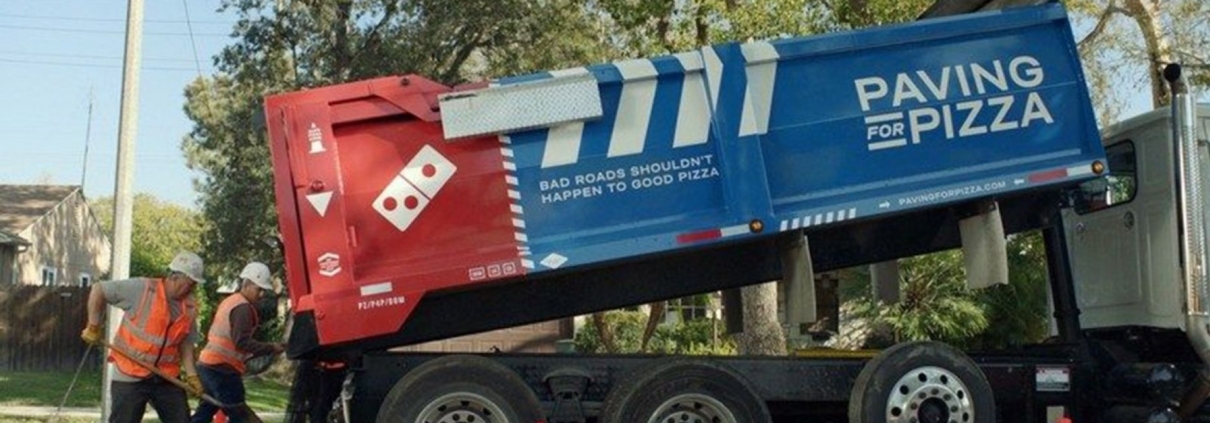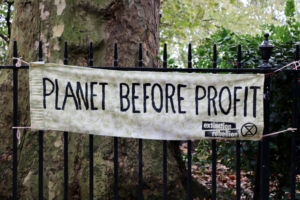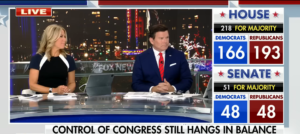Public-Pizza Partnership, GDPR You Kidding, and Shining Light on Those Leaks
Here’s What You Need To Know
It may not be infrastructure week, but this past week saw the entrance of an unexpected new stakeholder taking responsibility for improving America’s roads. Through its “Paving for Pizza” campaign, Domino’s is asking customers to nominate their towns for a paving grant that can be used to repair roads and potholes. A private company (again) repairing public roads raises questions about the role of government and apparently feels “dystopian” to some, bringing the conversation about infrastructure – and other public policy solutions that might benefit from private sector initiatives – front and center. Here is what you need to know about this issue:
- Why Is A Private Company Filling Potholes? Domino’s latest effort to ensure pizzas arrive at their destinations unharmed builds upon an earlier marketing initiative that allows customers to return their order for a new one if it gets damaged. In addition to nominations by customers, the chain is working with an undisclosed third-party organization to locate municipalities interested in receiving paving grants from a private, for-profit enterprise. Once selected, the city or town receives the grant and has full autonomy over the type of work needed to be done, by whom, when. The company plans to give out 20 grants of equal size across the country, asking recipients to share images on social media. Despite being clever marketing and arguably contributing to a better delivery and carryout experience in markets where roads are repaired, the initiative also provides a positive civic impact and a viral narrative that builds goodwill for the company going forward – which is a key component of weathering future political and reputational challenges.
- Why Are Cities Receptive To This? While Portland, Oregon’s pothole-filling anarchists may be unimpressed by Domino’s campaign, the city manager of Milford, Delaware penned a Washington Post op-ed explaining the grant’s benefits to his 10,000 resident city. In Milford, state funds are provided to cover some local repairs, but the rest of the funding is the responsibility of the municipality, whose budget is constrained by funding the police department and other basic services. Road repairs, garbage collection, snow-plowing, and the like are crucial for cities to function, but are at a disadvantage for receiving grant funding against flashier, more innovative ideas. Further, the government grant process can be long and arduous. Rather than dwell on “what it means that a pizza chain is funding basic government projects,” then, the city manager saw an opportunity to receive a significant investment for roads and promote his city at the same time, which in his words was “not a difficult decision.”
- What Could This Mean For Other Public Policy Challenges? Domino’s “Public-Pizza Partnership” counters the prevailing wisdom that government is the only entity capable of building and maintaining “public goods.” Instead of a policy debate characterized by a discussion of higher taxes, a lamentable “state of infrastructural affairs,” and eternal hope for an impactful federal infrastructure week, it may also lead to policy discussions about innovative ways to repair existing – and build new – infrastructure. The chain’s response to poor road conditions impacting customer satisfaction demonstrates a blueprint for private sector initiatives in other aspects long thought to necessitate a public government solution, which means that there may be a proliferation of local governments capitalizing on this approach by creating nonprofit 501(c)(3) foundations capable of receiving such corporate grants.
New approaches to public policy challenges, particularly those that leverage the innovation and capital of the private sector, are an opportunity to both improve the municipal services residents receive and showcase the city. Along with evaluating the benefits, corporate interests deciding whether to launch initiatives in the public policy arena need to be aware of the political and reputational risks that may stem from engaging in policy issues – including those as simple as being the target of public information requests once partnering with a city, “confidentiality clause be damned.” Therefore, understanding these risks before entering the fray can ensure that such a campaign is successful.
News You Can Use
SOUTHERN POVERTY LIBEL CENTER
Subscribe to Receive Insights
"*" indicates required fields
The Southern Poverty Law Center (SPLC) is increasingly used by Silicon Valley to help monitor news, speech, and organizations, but a recent example shows why some have concerns about the group’s credibility and judgment. SPLC was forced to apologize this week to British political activist Maajid Nawaz for wrongly labeling him and his non-profit organization Quilliam, which fight Islamist extremism, “anti-Muslim extremists.”
Originally added to the list for indiscretions like tweeting a cartoon of Muhammad and a Daily Mail op-ed about barring the face veil in certain spaces, Nawaz’s inclusion on the list “was baffling and difficult to defend” given the full context of his public work, which according to SPLC’s recent apology, promotes “pluralism and condemn[s] both anti-Muslim bigotry and Islamist extremism.” After being sued by Nawaz last June and hearing from human rights advocates who praised Nawaz’s work, the SPLC agreed to a settlement of nearly $3.4 million that Quilliam will now use to continue its mission, thereby concluding a lengthy battle of reputational damage wrought by misconstrued facts taken out of context.
GDPR YOU KIDDING?
There may be more nefarious consequences to the European Union’s General Data Protection Regulation (GDPR) than just those pesky emails notifying you of the new rules. In a textbook example of unintended consequences, GDPR’s restrictions on the types of user data companies can share without permission are inadvertently suppressing law enforcement’s ability to locate and shutdown cyber criminals and hackers, not least because criminals will decline to release data that links them to their illegal actions.
While the EU’s rigid approach to data privacy is the result of the general public’s outrage over the corporate world’s failure to keep their data secure in notable breaches, the impact of this approach may ultimately lead to more cybercrime and the need to fix the law.
SHINING LIGHT ON THOSE LEAKS
Regardless of what you think about the various Trump/Russia investigations, it’s clear that some of the revelations have hurt important American institutions, like the FBI, even if you don’t pay attention to President Trump’s twitter feed. In fact, you may be shocked to find how eye-poppingly widespread the blurring of appropriate lines between the Bureau and the press has been. The Department of Justice’s Inspector General Report expressed “profound concerns about the volume and extent of unauthorized media contacts” by its personnel, sometimes in exchange for “improper” gifts from reporters like drinks, meals, and tickets to sporting events.
Despite FBI policy strictly limiting who can speak to the media without specific authorization to four people at its headquarters, the inspector general found that this policy was “widely ignored,” and the IG’s office backed up this assertion with a chart depicting how just one reporter had contact with 18 different employees 110 times. FBI Director Christopher Wray has promised “intensive training” to address these issues, a step towards accountability that, outside of the partisan hysteria favored by both sides, should be a welcome development towards restoring public trust and accountability for the Bureau.
CONFUSION-PRICE INDEX
As tax reform celebrates six months since being signed into law, and despite continued trade war fears, the economy remains strong. However, a common narrative is that Middle America remains economically stagnant. So, is Middle America better off than it was 45 years ago? It depends on which calculation one uses.
According to the Bureau of Labor Statistics, the inflation-adjusted median income of fulltime working men in 2016 was $2,400 lower than it was in 1973, but The Wall Street Journal’s Andy Kessler deems this statistic “nonsense.” He argues that the Bureau of Labor Statistics’ calculation of cost-of-living adjustments are based on a consumer-price index that does not accurately account for the consumer goods and services, as well as technological advances, of today’s lifestyle. If it did, by Kessler’s estimation, a “true” median income would be $347 in 1973 and $51,640 in 2016 – a statistic that tells quite a different story about the quality-of-life for today’s middle class.



